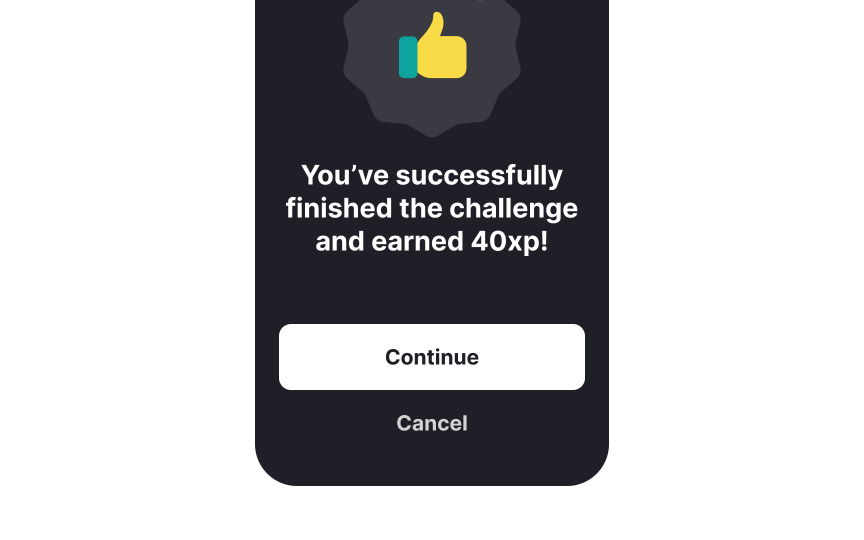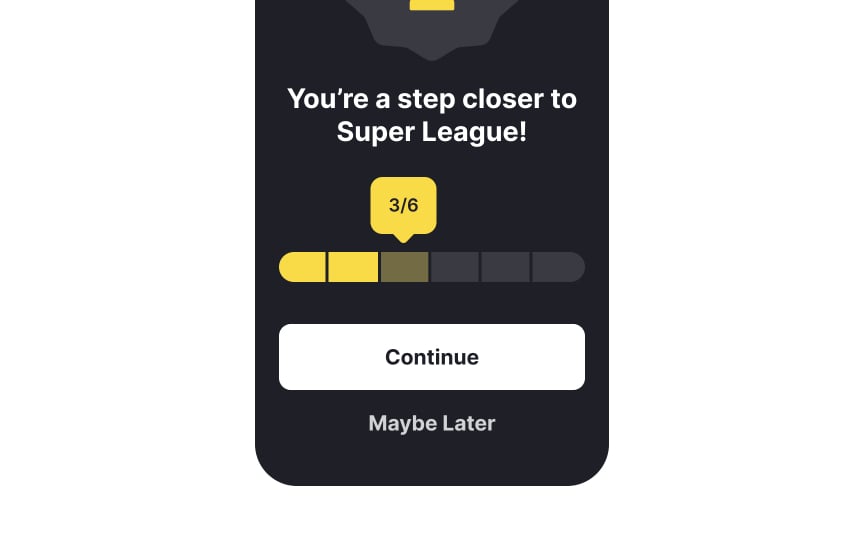Zeigarnik Effect
The Zeigarnik Effect observes that people tend to remember unfinished tasks better than those they've completed. This psychological phenomenon can create a mental urge to return and complete these tasks. When thoughtfully applied, this effect can enhance user engagement without resorting to manipulative tactics.
Here are some recommendations for using the Zeigarnik Effect in interfaces:
- Progress indicators: Break complex processes into smaller steps, showing progress through visual indicators. This not only motivates users to continue but also makes the interface more user-friendly and less overwhelming.
- Gamification: Incorporate elements like points, badges, or leaderboards to foster a sense of incompleteness and competition. This can motivate users to return and engage further with the app.
- Save user progress: Features like saving abandoned shopping carts or partially filled forms help users pick up where they left off, reducing frustration and encouraging completion of tasks.
- Freemium models: Offer basic features for free while showcasing premium options. This can entice users to upgrade for a more complete experience, driving both engagement and revenue.
- Timely reminders: Send reminders or notifications about incomplete tasks. These should be well-timed and focused to avoid overwhelming users and to keep the interaction positive.[1]


